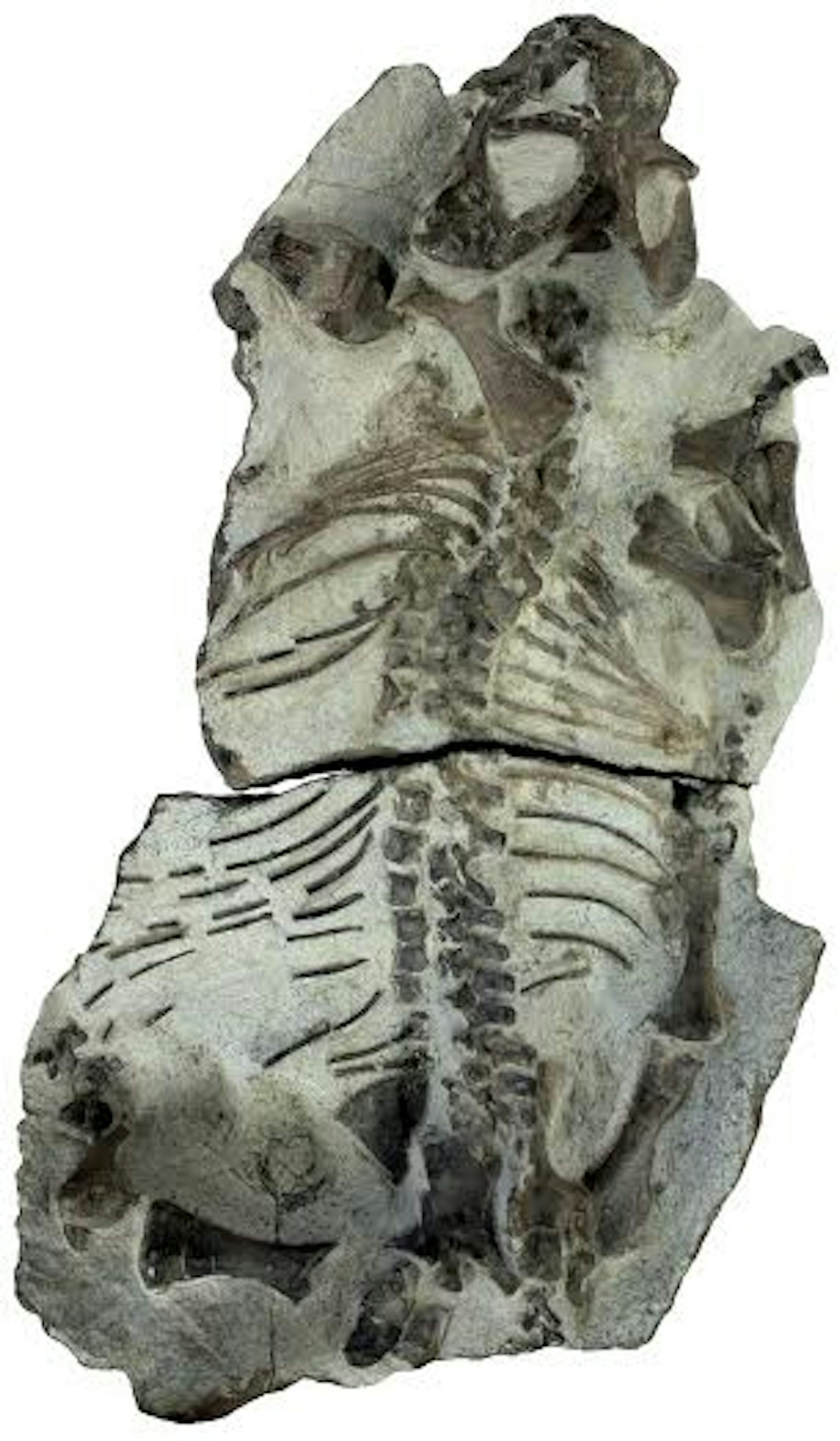

Abbreviations: FOL, flattened osteocyte lacunae GOL, globular osteocyte lacunae PFB, parallel-fibered bone tissue PO, primary osteons RC, resorption cavities. (E) Transverse sections of NMQR 1485b radius (Age Class IV) and (F) NMQR 1485c ulna (Age Class IV) showing no decrease in vascularization towards the sub-periosteal surface.

(D) Transverse section of NMQR 1485a humerus (Age Class IV) showing an inner region of resorption cavities and mid- to outer region of fibrolamellar bone. (C) Transverse section of SAM-PK-K8013a rib (Age Class III) showing primary osteons and peripheral parallel-fibered bone. The large, globular osteocyte lacunae indicate the presence of woven-fibered bone.

(B) Longitudinal section of NMQR 3181 humerus (Age Class III) showing a mixture of globular and flattened osteocyte lacunae. (A) Transverse section of NMQR 4039 femur (Age Class II) showing fibrolamellar bone tissue traversed by an annulus. Although previous studies have proposed an aquatic lifestyle for the genus, the similar morphology and bone microanatomy to several other large terrestrial Permo-Triassic dicynodonts supports a fully terrestrial mode of life.īone histology Bone microanatomy Dicynodontia End-permian mass extinction Therapsida. The lifestyle of Lystrosaurus was also re-examined. Thus, the previously described Lilliput effect, recognized by some authors in the Karoo fossil record (such as the therocephalian Moschorhinus kitchingi), may be a product of high juvenile excess mortality in the Triassic rather than a strict "dwarfing" of Lystrosaurus species. declivis are smaller in size, the lack of a growth asymptote in the largest specimens indicates that adult individuals would have been notably larger and may have been similar in size to large L. declivis indicates that even the largest collected specimens do not represent fully grown individuals. The absence of such bone tissue or outer circumferential lamellae in L. maccaigi, but absent from the limb bones of the other species. An overall transition to slower forming parallel-fibered bone is observed in the largest individuals of L. This feature may have been advantageous in allowing these species to alter their growth patterns in response to environmental cues in the post-extinction Early Triassic climate. The inconsistency of the growth marks in these latter two taxa suggests the presence of developmental plasticity. curvatus, but rare and inconsistent in the purely Triassic L. The osteohistology examination of all four species reveal rapidly forming fibrolamellar bone tissues during early to mid-ontogeny. The basal skull length measurements show that the Triassic species are smaller than the Permian species and supports previous studies. declivis, were examined using cranial measurements and bone histology.

In this study, the basal skull length and growth patterns of the four South African Lystrosaurus species from the Karoo Basin, L. In order to test this hypothesis a detailed examination of the body size and life history of Permo-Triassic Lystrosaurus is required. There is potential evidence of a Lilliput effect in Lystrosaurus in South Africa as the two Triassic species that became highly abundant after the EPME are relatively smaller than the two Permian species. The significant increased abundance of this genus during the post-extinction Early Triassic recovery period has made Lystrosaurus an iconic survivor taxon globally and ideal for studying changes in growth dynamics during a mass extinction. Lystrosaurus was one of the few tetrapods to survive the end-Permian mass extinction (EPME), the most catastrophic biotic crisis in Phanerozoic history.


 0 kommentar(er)
0 kommentar(er)
